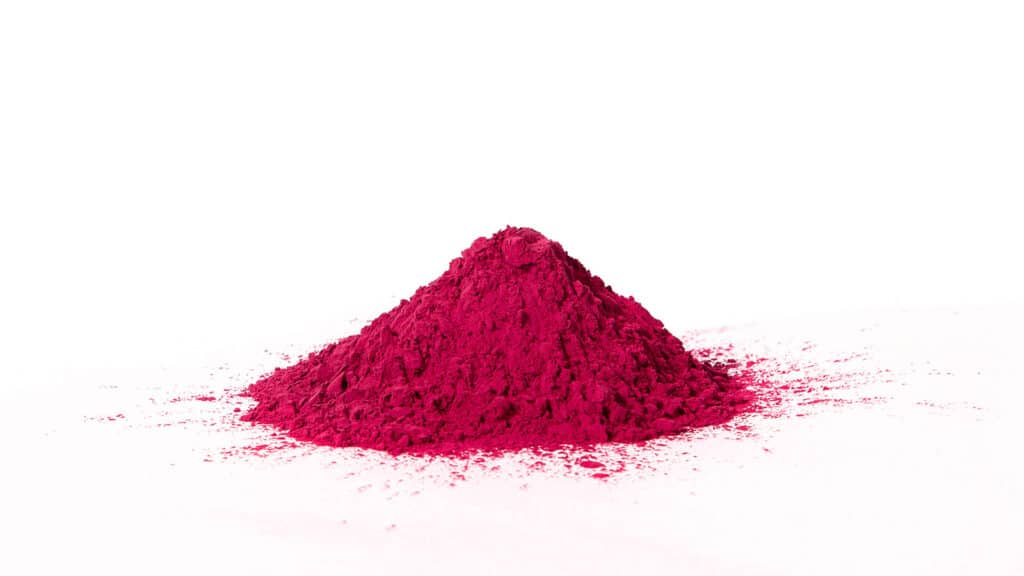Tucibi, or pink cocaine (pink coke), is a designer drug popular in the rave and festival market. It produces a stimulant and psychoactive effect on its users.
Despite being named pink cocaine, Tucibi doesn’t have chemical structures resembling cocaine. Nevertheless, it imitates the same psychedelic effects.
The manufacturers create the drug in pill form, and it’s characteristically pink-colored. Users ingest the pill orally or intranasally.
Stick around to learn more about Tucibi and the dangers and risks associated with the recreational drug.

Table of Contents
About Tucibi (Pink Cocaine)
Tucibi, also known as 2C-B, abbreviates to 2.5 dimethoxy-4-bromophenethylamine. The drug has a similar chemical composition to mescaline, another psychedelic. It’s popularly referred to as pink cocaine as well.
Tucibi stimulates a similar high to LSD and MDMA drugs. The blend of drugs within pink cocaine has popularized it in the rave and party scenes.
It has several other names, like Nexus, Venus, Toonies, and Erox. In terms of its history, Harvard Organic Chemist Alexander Shulgin synthesized the drug in 1974.
He created the drug to increase libido and treat erectile dysfunction. The narcotic became commonplace in psychotherapy during that time. It was later sold as an aphrodisiac in the U.S. market before being criminalized in 1995.
Pink cocaine is part of the New Psychoactive Substances list. It mimics the effects of widespread drugs like cocaine, a well known party drug.
Pink Cocaine vs. Cocaine
Pink cocaine and cocaine have different sources. The prior is purely synthetic, whereas the latter comes from the coca leaves.
In addition to their origin, pink cocaine and cocaine differ in their effects on the user’s brain. Traditional cocaine targets the brain’s dopamine receptors in the central nervous system. The receptors are responsible for feelings of happiness and pleasure.
On the other hand, pink cocaine targets the dopamine and serotonin receptors. The latter induce psychedelic effects and hallucinations.
Tucibi Abuse
Tucibi addicts can abuse the drug through multiple formats. They can snort it in powder form, similar to cocaine. Users may also swallow the pills, especially in public spaces.
Nevertheless, snorting is more popular since the drug’s effects kick in faster. Other, less common administrations include injections.
Injections are usually associated with long-term addicts that need to feel the potency of the drugs. They sometimes mix in more drugs with injections to enhance their experience.
Manufacturing Process of Tucibi
Most of the drug’s manufacturers hail from Colombian origins. The drug mixture consists of pink food coloring, ketamine, and MDMA.
Nonetheless, the drug’s traces are often unverifiable. It can contain traces of caffeine, meth, cathinone, or benzos.
Local kitchen labs often manufacture the drug. It’s becoming a popular choice in the neo-drug trafficking culture in Colombia. The drug is part of a new shift from plant-based narcotics like cocaine and cannabis to synthetic options that are more available and affordable.

Dangers and Risks of Tucibi
The effects of Tucibi usually culminate at hour two after ingestion. The drug can take as long as eight hours to wear off. That said, pink cocaine can cause various health complications, such as cardiac arrest and hypothermia.
Heart Issues
Tucibi can increase your heart rate exponentially. Users often experience a high heart rate, especially after a large dose.
They will also develop high blood pressure. The effect will affect those with a history of heart conditions even more, causing more risk.
Seizures
Seizures are primarily a common effect after overdosing. Even if a user had no history of seizures, they could still have one after Tucibi intake.
During the seizure, a user may harm themselves after erratic movements. They could break a bone or sustain a brain injury. After the convulsion, the user may go into cardiac arrest or respiratory failure.
Dilated Pupils
Pupils dilate from the contraction of two muscles, the iris sphincter and the iris dilator. Your body’s parasympathetic nervous system can cause a sphincter response.
Meanwhile, the sympathetic nervous system controls the dilator’s response. Tucibi can influence these parts of your nervous system, triggering dilated pupils.
Overdose Risks
Overdosing on pink cocaine can have detrimental effects on your body. Users will likely experience shallow breathing, clammy skin, respiratory arrest, and comas.
As a synthetic drug, it’s difficult to trace the origins of Tucibi’s ingredients. In turn, it can contain potentially fatal ingredients like fentanyl.
Mental Effects of Tucibi
Similar to the physical effects of Tucibi, the psychological signs also vary. Pink cocaine can induce hallucinations, disorientation, and panic attacks.
Tucibi can cause other psychological responses, such as sexual arousal, delirium, and euphoria. The prime motivator for users is the burst of energy the drug provides. It allows them to stay through the night at a rave or party.
Nevertheless, the drug can cause mood swings. For instance, a minor issue can result in paranoia and crying. The psychological effects of pink cocaine (Tucibi) pose a more dangerous risk for those dealing with schizophrenia, bipolar disorder, or psychosis.
Besides that, pink cocaine also enhances user focus. They may feel more confident and willing to undergo dangerous feats since they view themselves as invincible. Additionally, they may hear or see things that aren’t there, resulting in hallucinations.
Addiction
Tucibi is an addictive drug. It’s even more addictive than methamphetamines. One dose of pink cocaine can lead to a long-term battle with addiction.
For this reason, early addiction treatment is crucial. Otherwise, users may abuse the drug and develop a higher tolerance. They’ll need to increase their intake to experience the same high. A dose increase will only increase physical and mental health risks.
To Conclude
Tucibi is a relatively new substance in the drug scene. It’s more popular in the younger demographics due to its affordability and availability in raves.
The drug is a type of psychedelic usually sourced from South America. It can include multiple blends, such as ketamine, amphetamines, and MDMA.
That said, pink cocaine, like other synthetic drugs, poses multiple physical and mental risks. They can range from heart complications to mood swings and hallucinations.
Harm reduction starts by educating yourself regarding drug interactions.
FAQ
What is Tucibi?
What is Tucibi made of?
What is pink cocaine?
Published on: 2023-02-24
Updated on: 2025-01-01



